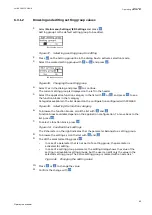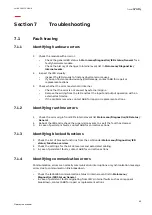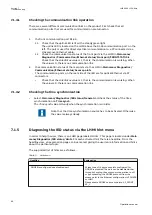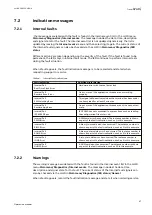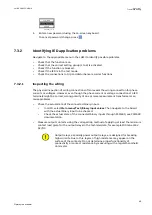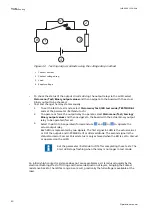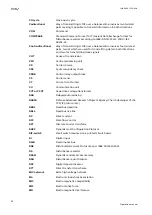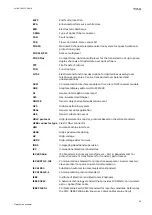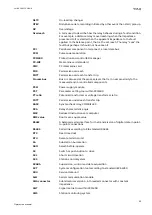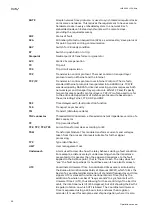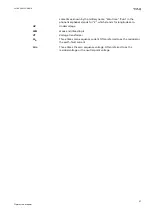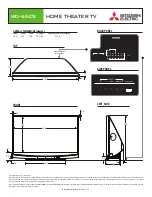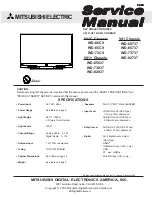
SNTP
Simple network time protocol – is used to synchronize computer clocks
on local area networks. This reduces the requirement to have accurate
hardware clocks in every embedded system in a network. Each
embedded node can instead synchronize with a remote clock,
providing the required accuracy.
SOF
Status of fault
SPA
Strömberg Protection Acquisition (SPA), a serial master/slave protocol
for point-to-point and ring communication.
SRY
Switch for CB ready condition
ST
Switch or push button to trip
Starpoint
Neutral point of transformer or generator
SVC
Static VAr compensation
TC
Trip coil
TCS
Trip circuit supervision
TCP
Transmission control protocol. The most common transport layer
protocol used on Ethernet and the Internet.
TCP/IP
Transmission control protocol over Internet Protocol. The de facto
standard Ethernet protocols incorporated into 4.2BSD Unix. TCP/IP
was developed by DARPA for Internet working and encompasses both
network layer and transport layer protocols. While TCP and IP specify
two protocols at specific protocol layers, TCP/IP is often used to refer
to the entire US Department of Defense protocol suite based upon
these, including Telnet, FTP, UDP and RDP.
TEF
Time delayed earth-fault protection function
TLS
Transport Layer Security
TM
Transmit (disturbance data)
TNC connector
Threaded Neill-Concelman, a threaded constant impedance version of a
BNC connector
TP
Trip (recorded fault)
TPZ, TPY, TPX, TPS
Current transformer class according to IEC
TRM
Transformer Module. This module transforms currents and voltages
taken from the process into levels suitable for further signal
processing.
TYP
Type identification
UMT
User management tool
Underreach
A term used to describe how the relay behaves during a fault condition.
For example, a distance relay is underreaching when the impedance
presented to it is greater than the apparent impedance to the fault
applied to the balance point, that is, the set reach. The relay does not
“see” the fault but perhaps it should have seen it. See also Overreach.
UTC
Coordinated Universal Time. A coordinated time scale, maintained by
the Bureau International des Poids et Mesures (BIPM), which forms the
basis of a coordinated dissemination of standard frequencies and time
signals. UTC is derived from International Atomic Time (TAI) by the
addition of a whole number of "leap seconds" to synchronize it with
Universal Time 1 (UT1), thus allowing for the eccentricity of the Earth's
orbit, the rotational axis tilt (23.5 degrees), but still showing the Earth's
irregular rotation, on which UT1 is based. The Coordinated Universal
Time is expressed using a 24-hour clock, and uses the Gregorian
calendar. It is used for aeroplane and ship navigation, where it is also
Section 8
1MRK 500 125-UEN A
Glossary
56
Operation manual


